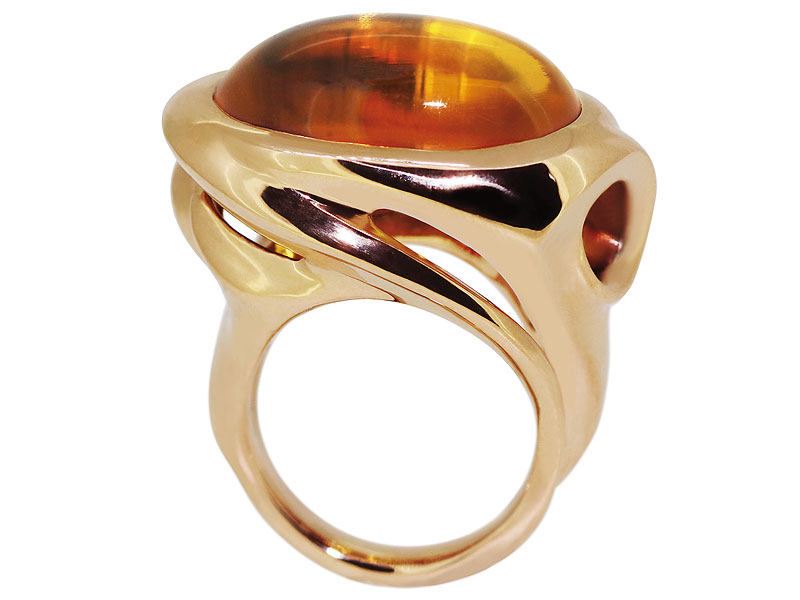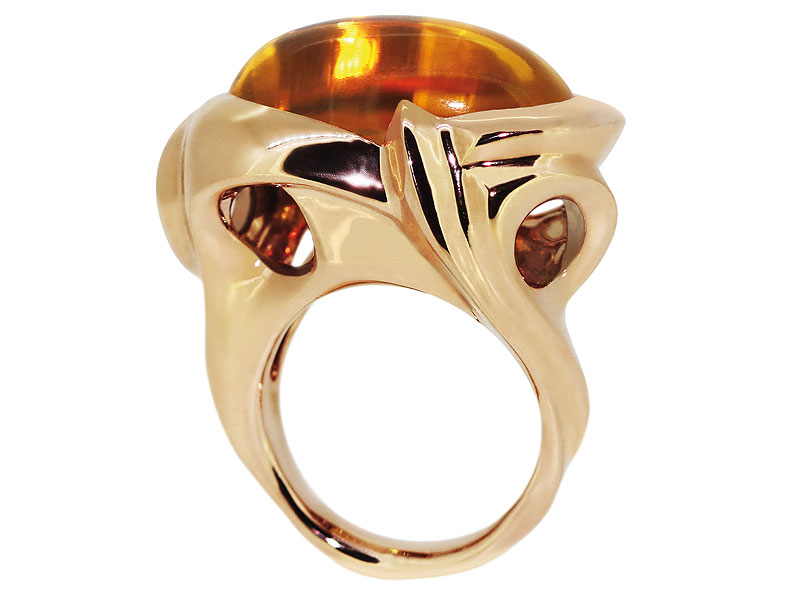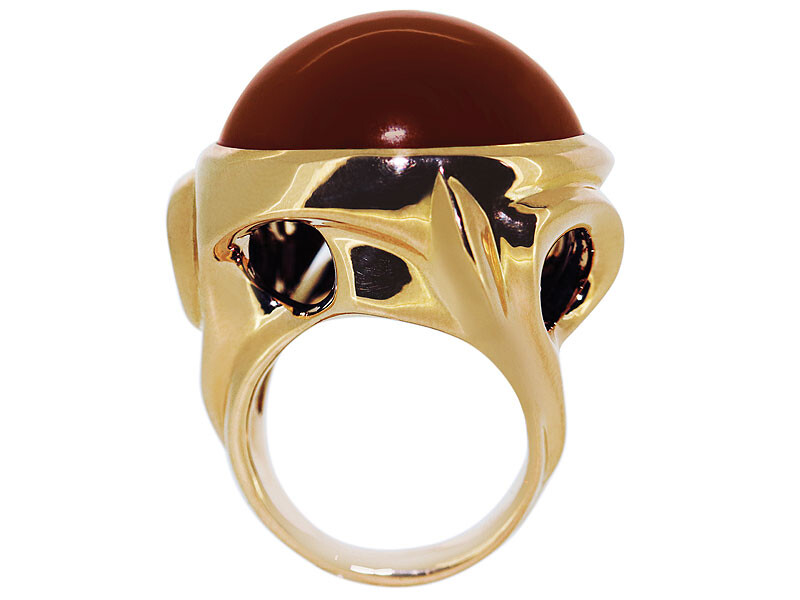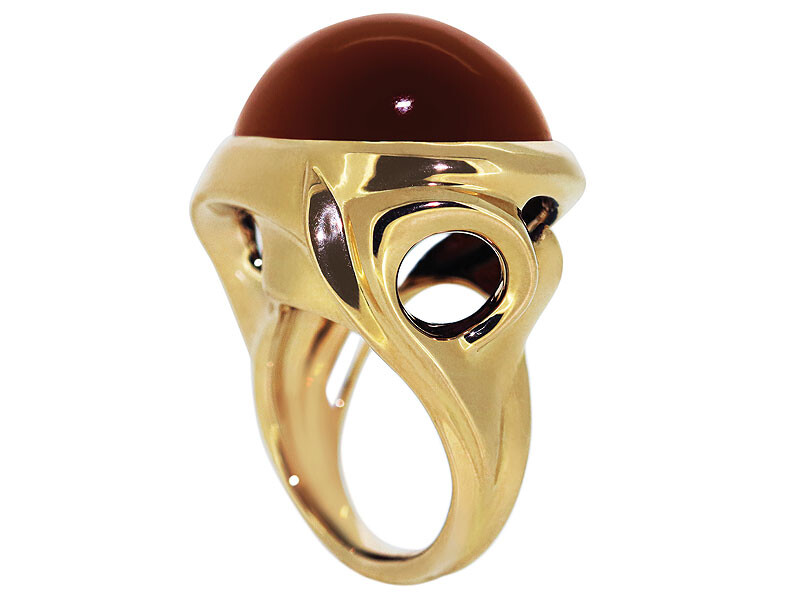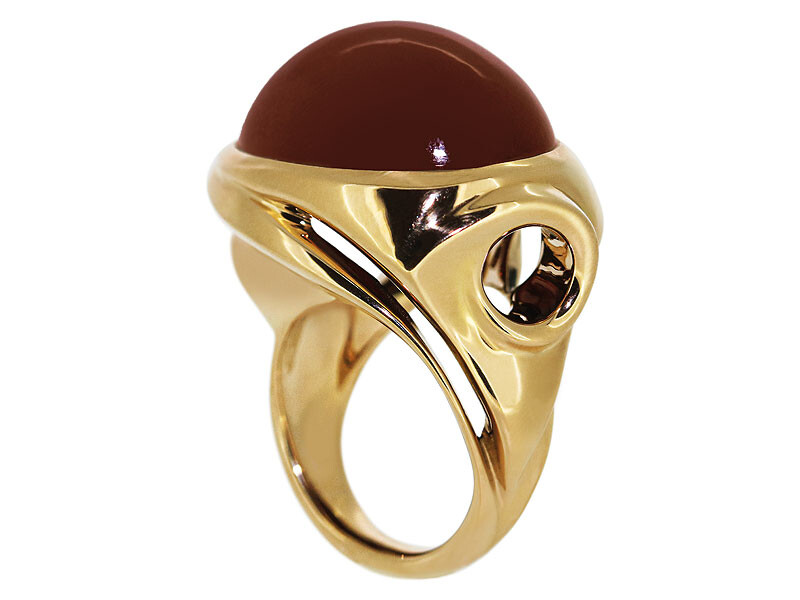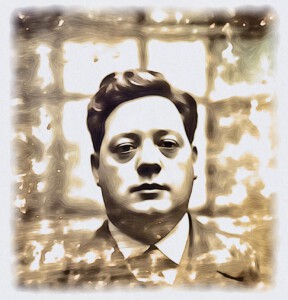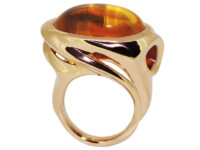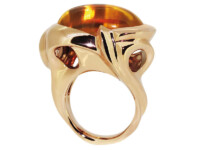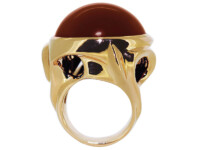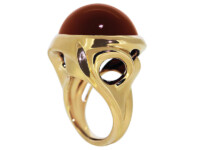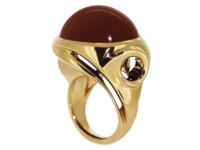63 · Korngolds Virtuosity
Allongé
Ein von Musik inspirierter Ringentwurf aus 18 kt Roségold mit einem Citin Cabochon 12x22 mm
Erich Wolfgang Korngold (1897 - 1957) war ein austroamerikanischer Komponist, Dirigent und Pianist.
Für seine Filmmusik erhielt er zwei Oscars. Meine Inspiration: Violin Concerto in D major Op 35
63 · Korngolds Virtuosity
Allongé
63 · Korngolds Virtuosity
Pomegranate
Ein von Musik inspirierter Ringentwurf aus 18 kt Roségold mit einem Citin Cabochon 12x22 mm
Erich Wolfgang Korngold (1897 - 1957) war ein austroamerikanischer Komponist, Dirigent und Pianist.
Für seine Filmmusik erhielt er zwei Oscars. Meine Inspiration: Violin Concerto in D major Op 35
63 · Korngolds Virtuosity
pomegranate
Ein von Musik inspirierter Ringentwurf aus 18 kt Roségold mit einem Granatcabochon 19x24mm
Das Rot des Granats leuchtet mystisch aus der Tiefe.
Erich Wolfgang Korngold (1897 - 1957) war ein austroamerikanischer Komponist, Dirigent und Pianist.
Für seine Filmmusik erhielt er zwei Oscars. Meine Inspiration: Violin Concerto in D major Op 35
63 · Korngolds Virtuosity
Pomegranate
Ein von Musik inspirierter Ringentwurf aus 18 kt Roségold mit einem Granatcabochon 19x24mm
Das Rot des Granats leuchtet mystisch aus der Tiefe.
Erich Wolfgang Korngold (1897 - 1957) war ein austroamerikanischer Komponist, Dirigent und Pianist.
Für seine Filmmusik erhielt er zwei Oscars. Meine Inspiration: Violin Concerto in D major Op 35
63 · Korngolds Virtuosity
Pomegranate
Ein von Musik inspirierter Ringentwurf aus 18 kt Roségold mit einem Granatcabochon 19x24mm
Das Rot des Granats leuchtet mystisch aus der Tiefe.
Erich Wolfgang Korngold (1897 - 1957) war ein austroamerikanischer Komponist, Dirigent und Pianist.
Für seine Filmmusik erhielt er zwei Oscars. Meine Inspiration: Violin Concerto in D major Op 35
Music is my second passion. It acts as a muse.
With headphones on, external influences shut out, concentration focused, the sounds flow through the ears, over the heart, and into my hands, shaping a sound sculpture.
I never work with sketches; instead, I start with a solid block of wax, out of which the form is sculpted, much like a sculptor working with stone. The music evokes an emotion, one line leads to the next. The process of shaping becomes increasingly fluid, following an unpredictable inner logic.
One of my absolute favorite musicians and composers is the genius Erich Wolfgang Korngold.
I love the complexity of his works, with a poetry that captivates, moves, and intoxicates me from the first bars—I want to dance, enchanted.
These rings are inspired by the music of Erich Wolfgang Korngold, specifically his Violin Concerto in D Major, Op. 35.
The concerto is dedicated to Alma Mahler, the wife of his mentor Gustav Mahler.
It was composed in 1945 and premiered in 1947 with Jascha Heifetz and the St. Louis Symphony under Vladimir Golschmann. The evening is considered one of the orchestra’s most successful concerts.
Erich Wolfgang Korngold was an Austrian-American composer, conductor, and pianist.
He was born in 1897 in Brünn, the capital of the Margraviate of Moravia in the Austrian Empire, and passed away in Los Angeles in November 1957.
His happy marriage to Louise Sonnenthal (Luzi Korngold) produced two sons.
Korngold’s oeuvre spans an incredible range of film scores, stage works, incidental music, ballets, piano pieces, songs, operas and operettas, as well as orchestral and chamber music. Like a chameleon, he moved seamlessly through these diverse forms.
He won two Oscars for his film scores and was nominated for three others.
Erich Korngold came from a Jewish artistic family and was considered a child prodigy. At the age of eleven, he garnered attention with his composition of the pantomime ballet Der Schneemann (The Snowman) and was subsequently supported by Vienna’s high aristocracy. His early works were performed by prominent figures in the music world, such as Bruno Walter, Artur Schnabel, Arthur Nikisch, Wilhelm Furtwängler, Felix Weingartner, and Richard Strauss.
In the 1920s, he saw himself as a representative of modernism, though he later took a different path.
In 1934, Korngold left Austria to accept Max Reinhardt’s invitation to Hollywood, where he was asked to arrange, adapt, and compose music for Reinhardt’s film A Midsummer Night’s Dream, incorporating Felix Mendelssohn’s incidental music. With this, he set new standards for the still young genre of film music.
In the following years, he spent winters in California working as a film composer for Warner Brothers.
Although Korngold already enjoyed an excellent reputation in the United States before the Nazi rise to power in Austria in 1938, he had not planned to stay there permanently. Now, however, as a Jew, he was safe there and brought his family and parents over.
In 1946, he largely stopped composing for films and turned again to classical orchestral music.
However, his attempt after 1946 to return to “absolute music” (music that refers to nothing beyond itself and is intended solely to be listened to) met with little success.
The later works of the once highly successful musician increasingly fell out of attention and into obscurity.
He died of a heart attack in November 1957 and is buried in Los Angeles at the Hollywood Forever Cemetery.
Today, his works are experiencing an international renaissance.
ONE OF A KIND
Jedes Schmuckstück ist ein Unikat und variiert in Material und Proportion.
Handmodelliert und gefertigt von Susa Beck / Atelier München .
OVERVIEW
INSPIRATION

